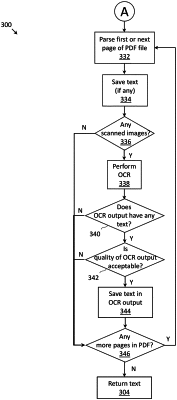| CPC G06F 21/6245 (2013.01) | 18 Claims |

|
1. A method, comprising:
receiving, in parallel by each of a plurality of datasource processors, datasource objects from respective ones of a plurality of datasources, each datasource processor being communicatively coupled to one or more of the plurality of datasources;
communicating, by the plurality of datasource processors, with an artificial intelligence (AI) engine to generate an object summary for each of the datasource objects, wherein each respective object summary includes an object identifier, one or more local entities derived from the respective datasource object, and a mapping from each of the one or more local entities to one or more attributes derived from the respective datasource object;
generating the object summary for each of the datasource objects, wherein generating the object summary for each datasource object comprises:
determining, by a text extractor of the AI engine, text included in the datasource object;
determining, by a layout extractor of the AI engine, a layout of the text;
arranging, by the layout extractor of the AI engine, the text based on the layout of the text;
determining, by an object classifier of the AI engine, a category of the datasource object based on the text and layout of the text;
determining, by an attribute extractor of the AI engine, attributes included in the datasource object; and
grouping, by a local entity resolver of the AI engine, the attributes into one or more attribute groups;
augmenting each of the object summaries to include information regarding global entities by (i) aggregating the local entities in batches at a queue of a global entity resolver, and (ii) for each of the local entities aggregated at the queue, mapping by the global entity resolver the local entity to one of the global entities;
evaluating, by each of a plurality of policy engines, a subset of the object summaries with respect to a security and/or privacy policy, wherein the evaluation includes determining, for each object summary, whether a security and/or privacy violation exists with respect to the respective datasource object with which the object summary is associated, wherein the policy engines perform the evaluation step in parallel with one another, and wherein the security and/or privacy violation is recognized when an operation concerning the datasource object associated with the object summary violates the security and/or privacy policy; and
when the security and/or privacy violation is recognized, applying a remediation measure in connection with the datasource object for which the security and/or privacy violation exists.
|